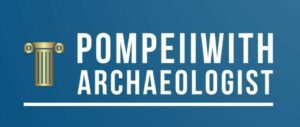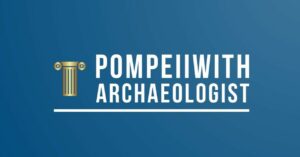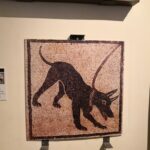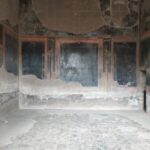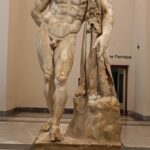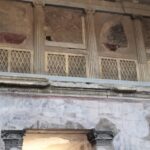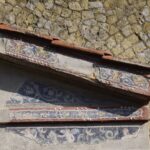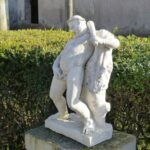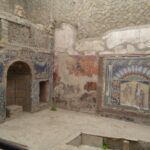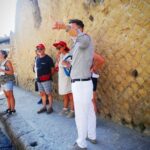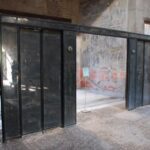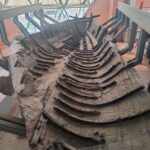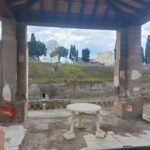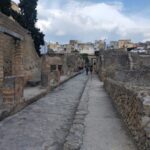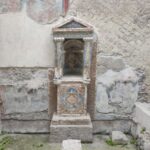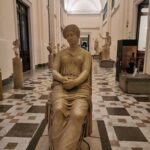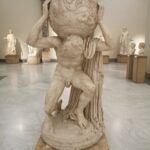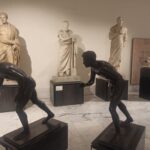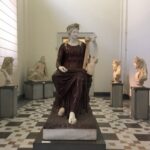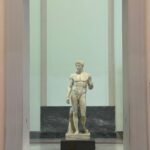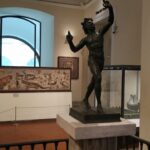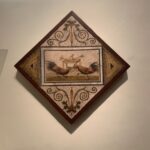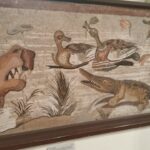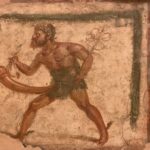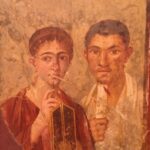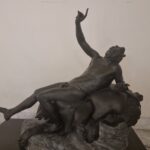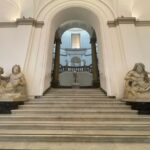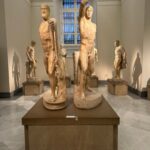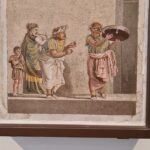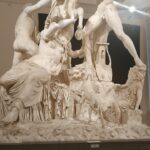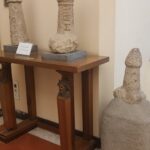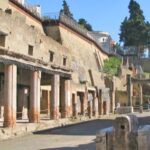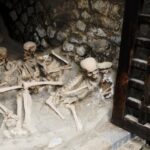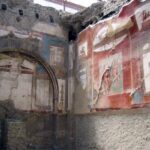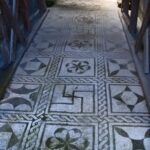Herculaneum And national Archaeological museum of naples led by an Archaeologist. with private trasportation
Walking tour in the archeological site and in the museum. Private trasportation in a van driven by a professional driver
I was born near the excavation of Herculaneum, and it is in my heart. Thanks to my studies in classical archeology and my passion I will try to convey to you notions, anecdotes and above all emotions that I hope you will never forget.
Herculaneum was an ancient Roman town located in the shadow of Mount Vesuvius, near present-day Naples in Italy. The history of Herculaneum is closely intertwined with the catastrophic eruption of Mount Vesuvius in 79 AD. Here’s an overview of its history:
-
Foundation and Early History: Herculaneum was founded by Greek colonists around the 7th century BC as a small coastal settlement known as Heraklion. Over time, it grew into a prosperous town, benefiting from its strategic location along trade routes and its fertile agricultural land.
-
Roman Period: In the 4st century BC, Herculaneum came under Roman control during the expansion of the Roman Republic. Under Roman rule, the town flourished as a resort destination for wealthy Romans, who built luxurious villas along the coast. Herculaneum became known for its opulent architecture, beautiful frescoes, and vibrant social life.
-
Mount Vesuvius Eruption: On August 24, 79 AD, Mount Vesuvius erupted catastrophically, burying Herculaneum and several other nearby towns, including Pompeii, under a thick layer of volcanic ash and debris. The eruption preserved the town remarkably well, providing invaluable insights into daily life in ancient Rome.
-
Rediscovery and Excavation: Like Pompeii, Herculaneum remained buried and largely forgotten for centuries after the eruption. Its rediscovery began in the 1710, when a farmer, digging a well in his land to find water, instead found the marble floor of the Roman theater stage. Excavations have been ongoing since then, revealing a wealth of archaeological treasures, including well-preserved buildings, artifacts, and skeletal remains.
-
Archaeological Site: Today, Herculaneum is an important archaeological site and UNESCO World Heritage Site. Visitors can explore the remarkably preserved ruins of the ancient town, including its streets, houses, public buildings, and even organic remains such as wooden furniture and foodstuffs preserved by the volcanic ash.
-
Insights into Ancient Life: The excavations at Herculaneum have provided scholars with invaluable insights into various aspects of ancient Roman life, including architecture, urban planning, social structure, economy, and daily routines. The well-preserved state of the town has made it a crucial site for understanding the Roman world and its inhabitants.
Overall, the history of Herculaneum is a testament to the power of nature and the resilience of human civilization. The town’s tragic fate and subsequent excavation have enriched our understanding of ancient history and continue to captivate visitors from around the world.
It will be a pleasure for me, as an archaeologist expert, to explain to you the most important works.
– MANN, Museo Archeologico Nazionale di Napoli, offspring of the Real Museo Borbonico, is without doubt the world’s greatest institute of classical archaeology, for both the quantity and variety of its collections. It’s glorious three-century history has made it a point of reference for scholars, travellers and distinguished visitors. It’s one of the most famous and visited museums in Italy, among the oldest and most important in the world for the richness and uniqueness of its heritage.
The main works preserved come from the Farnese collection inherited by King Charles of Bourbon from his mother Elisabetta Farnese and from the excavations of Pompeii, Herculaneum and other archaeological sites in the Campania region.
The Museum was inaugurated in 1816 by Ferdinand I of Bourbon, son of Charles, immediately becoming one of the main destinations of the so-called Grand Tour, a journey for one’s classical cultural education made by European nobles who also visited Venice, Florence, Rome and then Naples.
MEETING POINT + TOUR DURATION
Meeting Point Options: Rail or Bus Station, Cruise Ship Port, Airport, Hotel, Address or Intersection, Monument/Building of Naples or the surrounding area up to Sorrento
Duration: 6 hours
ITINERARY
The tour in Herculaneum lasts 2 hours. During the guided tour of Herculaneum you are visiting:
– We’l visit the ancient beach
– We will be able to see the scheletons
– The house of the dears
– Then roman fast food
– The house of the wodden partition
– The Samnite House
– The public bathhouse
– The house of Neptune and Amphitrite
– The decumanus maximus
– We will also see the house of the Bicentenary
– And finally the guild of the Augustales
– The tour of the museum lasts 1 hour and half.
There are different sections in the Museum and I will illustrate the most significant masterpieces underlining their period, production techniques, anecdotes and historical curiosities of the figure represented. The itinerary includes visits to the following sections:
– FARNESE SECTION
– MOSAICS SECTION
– SECRET CABINET
– SECTION OF THE VILLA OF THE PAPYRS
– SUNDAY HALL
– SECTIONS OF DAILY LIFE OBJECTS
– FRESCOES SECTION
– CORK PLASTIC OF POMPEII FROM 1800
*This tour can be customized
WHAT’S INCLUDED
- Guiding Service
- Private trasportation
ESTIMATED LOCAL CASH NEEDED
16 € – admission fees to enter in the ruins of Herculaneum,
22 € for National Archaeological Museum; prices are per person.
Under 18 years old are free of charge.
WHAT’S EXTRA
- Meal
